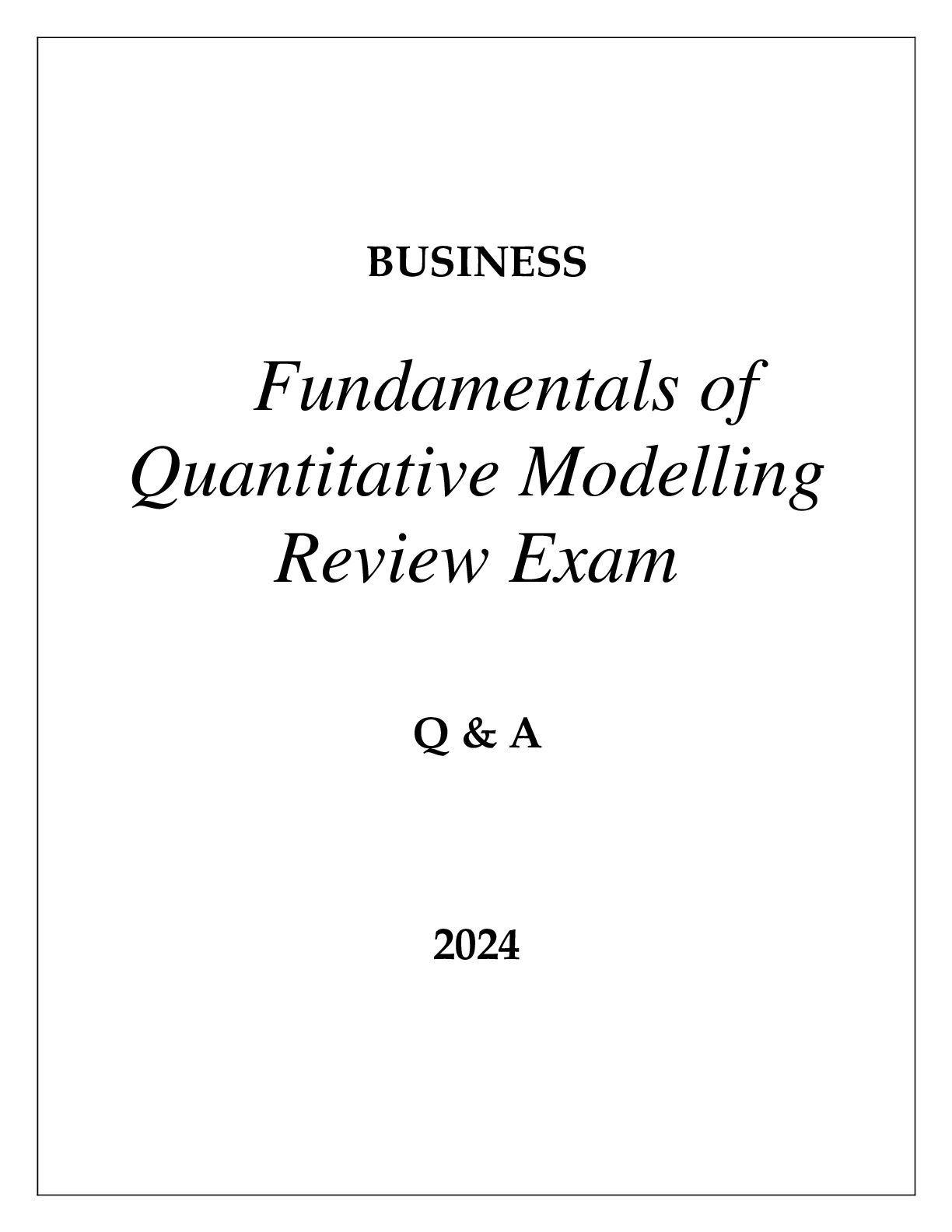
Introduction to Professional Billing and Coding Careers Exam 5 | Answered 2025/2026.
$ 9.5

UPenn BUSINESS FUNDAMENTALS OF QUANTITATIVE MODELLING REVIEW EXAM Q & A 2024
Biology > QUESTIONS & ANSWERS > Neuroscience - Synaptic Plasticity (All)
1. What causes synaptic facilitation? a. Buildup of Ca2+ in the presynaptic terminal b. Release of greater than usual number of synaptic vesicles c. Release of synaptic vesicles loaded with extra n ... eurotransmitter d. Activation of synaptotagmin 7 by means of phosphorylation e. Stronger binding of Ca2+ to synaptotagmin 7 Answer: a Textbook Reference: Short-Term Synaptic Plasticity 2. Refer to the figure. At which time interval would the postsynaptic membrane potential of the second stimulus be greatest? a. 8 ms b. 15 ms c. 20 ms d. 30 ms e. 50 ms Answer: a Textbook Reference: Short-Term Synaptic Plasticity 3. Refer to the figure. Which statement describes the depicted phenomenon most accurately? a. Synaptic depression directly correlates with the concentration of extracellular Ca2+ b. Synaptic depression directly correlates with the amount of neurotransmitter released. c. Synaptic depression is inversely correlated with the amount of neurotransmitter released. d. Synaptic depression depends on the rate of neurotransmitter release. e. Synaptic depression depends on the concentration of neurotransmitter in synaptic vesicles. Answer: b Textbook Reference: Short-Term Synaptic Plasticity 4. How would an increase in external Ca2+ concentration affect synaptic depression? a. It would increase the rate of depression. b. It would reduce the rate of depression. c. It would decrease the rate of neurotransmitter release and induce depression. d. It would increase the rate of neurotransmitter release and delay depression. e. It would have no effect on depression. Answer: a Textbook Reference: Short-Term Synaptic Plasticity 5. Which type of short-term synaptic plasticity lasts the longest? a. Potentiation b. Augmentation c. Depression d. Facilitation e. Post-tetanic potentiation Answer: e Textbook Reference: Short-Term Synaptic Plasticity 6. What characteristic(s) make(s) Aplysia californica a practical model organism for studying the nervous system? a. Its great magnitude and variety of neurons b. Its large neurons c. The random location of its neurons d. That it is aquatic e. All of the above Answer: b Textbook Reference: Long-Term Synaptic Plasticity and Behavioral Modification in Aplysia [Show More]
Last updated: 3 years ago
Preview 1 out of 6 pages

Buy this document to get the full access instantly
Instant Download Access after purchase
Buy NowInstant download
We Accept:

Can't find what you want? Try our AI powered Search
Connected school, study & course
About the document
Uploaded On
Apr 28, 2022
Number of pages
6
Written in
All
This document has been written for:
Uploaded
Apr 28, 2022
Downloads
0
Views
187
Scholarfriends.com Online Platform by Browsegrades Inc. 651N South Broad St, Middletown DE. United States.
We're available through e-mail, Twitter, Facebook, and live chat.
FAQ
Questions? Leave a message!
Copyright © Scholarfriends · High quality services·